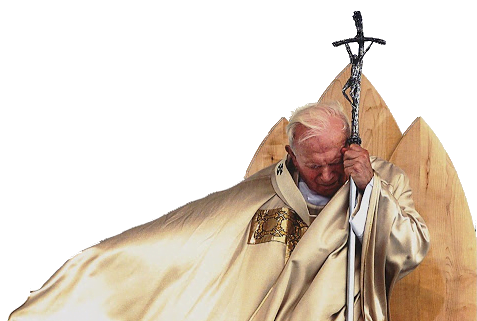
Ezekiel’s vision of the valley of dry bones (Ezekiel 37:1-14) is one of my favorite stories in Scripture. The vividness of its imagery, the wonder of its unfolding narrative, and visceral appeal of its symbolism endow it with a sort of “plug-and-play” appeal–even an uninitiated reader can engage with this wonderful story. Yet the story becomes even more powerful when the reader learns something about its historical context, literary background, and theological symbolism.
This vision dates to the period of Israel’s history known as the Babylonian Exile. Those who follow these Daily Reflections know much about the Babylonian Exile. We have discussed it many times: In 597 BC, the armies of Babylon forced the capitulation of the city of Jerusalem and deported the Judean king and many of the Judean leaders to Babylon (2 Kings 24:10-16). Ten years later, in 587/6 BC, after Jerusalem had rebelled again, the Babylonians razed Jerusalem and its temple and deported a second wave of Judean leaders.
Among the first wave of the deported was the young Ezekiel, whom God later called in Babylon to the office of prophet. For those deportees forced to live in Babylon, the future seemed a black hole into which the people were destined to disappear. A century-and-a-half previously, many citizens of Judah’s sister kingdom, Israel, had been similarly deported, had lost their identity, and had faded into the mists of history–the so-called lost tribes of Israel. The exile was more than just a crisis of physical suffering and loss of communal identity. It also resulted in a crisis of faith. The key symbols of Judean faith–Jerusalem, its temple, its people, and the Davidic monarchy–had all been destroyed. According to the theological rationality of the ancient world, many exiled Judeans assumed that their deity had been defeated by a stronger deity from Babylon. The people wondered if the Lord was truly lord and truly faithful.
Behind the vision in Ezekiel 37 are two literary forms–the communal lament psalm and the prophetic message of deliverance. In communal laments, the people pour out their pain in fervent cries for deliverance. Toward the end of the lament, we hear the words of the deported people: “Our bones are dried up, and our hope is lost; we are cut off completely”. One finds similar language in all the lament psalms. “My strength fails because of my misery, and my bones waste away” (Psalm 31:10). “My bones are shaking with terror” (Psalm 6:2). “My bones burn like a furnace” (Psalm 102:3). The reference to “bones” here is an idiomatic way of referring to one’s deepest self, or, in the case of “our bones,” a way for the community to refer to its most essential self (thus also when Adam, in search of a partner finally finds Eve, he cries, “This at last is bone of my bones” (Genesis 2:23)). What we learn from this is that Ezekiel’s vision of the valley of dry bones is a poetic and prophetic response to the situation of God’s people–to their sense of hopelessness, to their situation of being cut off from their land, their temple, and–they think–from their God. The people use a common idiom of their time to express their helplessness and hopelessness. They say, “Our bones are dried up.” Ezekiel shows them a vision of exactly that: dry bones.
The second literary genre that helps us understand Ezekiel’s vision is the prophetic message of deliverance. As is well known, the prophets were messengers sent from God bearing His messages. At times, the prophets were sent with messages of judgment, calls to repentance, and admonitions to obedience. At other times–and this is the case in Ezekiel 37–the prophets were sent with good news. The summary of Ezekiel’s good news is found in the closing verses of today’s Old Testament reading, which culminates with these words: “I will put my spirit within you, and you shall live, and I will place you on your own soil.” Ezekiel’s message is the promise that God’s spirit will reach out and bring the people back from exile.
A third element in the story that is helpful is the multidimensional meaning of a Hebrew word that can mean either “spirit” (as in God’s spirit), “wind,” or “breath.” In Ezekiel’s vision, the prophet plays on all three meanings as part of his brilliant strategy to make God’s promise of return from exile ring in the ears of the deportees. In Ezekiel 37:1, Ezekiel reports that the Lord’s “Spirit” showed him a vision of an entire valley filled with dry bones. The question is, “Can these bones live?” The key to the unfolding story, of course, is that to live, the bones need not only flesh, sinew, skin and blood. . . but also “breath” (the Spirit): “I will. . . put breath in you, and you shall live” (Ezekiel 37:6). Then in the vision, sinew, flesh, and skin cover the bones, but there is no “breath” in them (Ezekiel 37: 8) and hence, no life. So, Ezekiel prophesies to the “breath”, “Come from the four “winds”, O Breath, and breathe upon these slain, that they may live” (Ezekiel 37: 9). And “the breath came into them, and they lived” (Ezekiel 37: 10).
The prophet’s insistent use of repetition of a Hebrew word having three distinct meanings is to drum the point of the message into our heads: God’s Spirit is the key. With God’s spirit, anything is possible. Without it, existence is just flesh and blood. But with God’s spirit, there is life–what Jesus called fullness of life. And there is no place on earth, no when in time, and no what in sin or situation, that can keep God’s Spirit away from God’s people.

